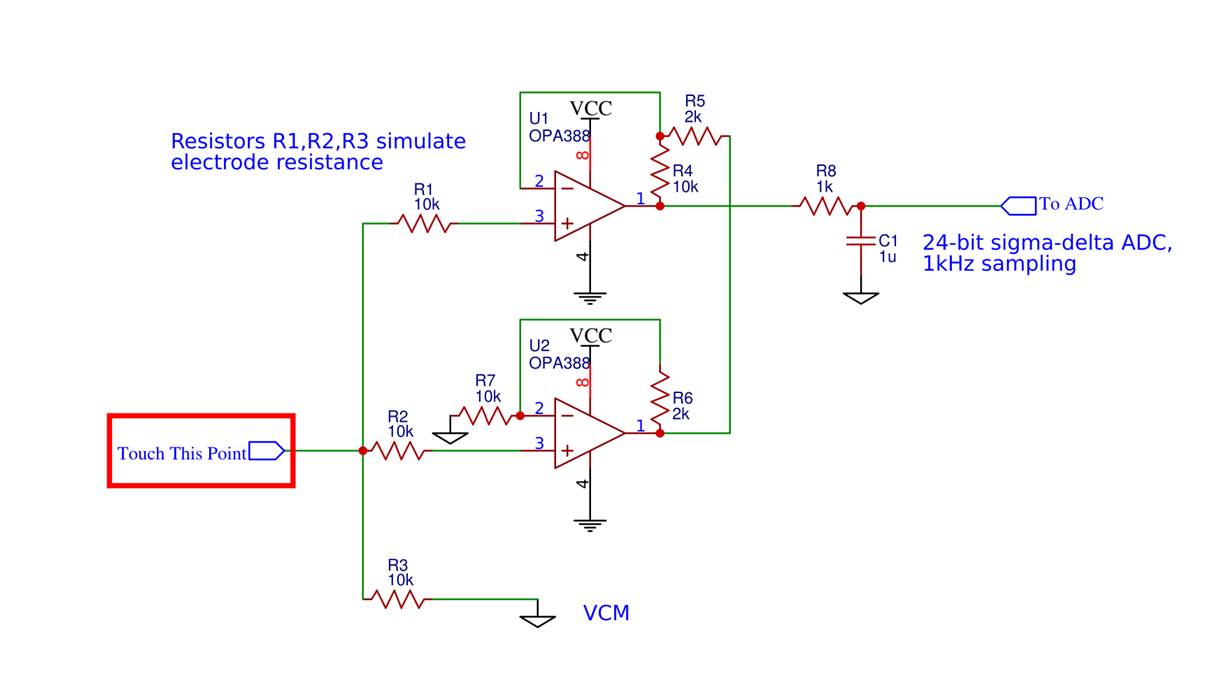Other Parts Discussed in Thread: OPA376, OPA141, OPA140
Hi all,
Are your chopping amplifiers, such as OPA388, are well-suited for biopotential measurements (as EEG,ECG...) ?
Now I`m using conventional JFET-input amplifier with 500nV p-p noise in 0.1-10Hz band, it works normally, but I`m trying to upgrade it to OPA388.
But with OPA388 I have a strange issue: noise level become very high (about 9uV p-p in 0.1-10Hz band, roughly white) when I touch inputs (shorted thru 10k resistors) whith my hand (look at point marked on attached sheme). Without touching this point noise level is almost close to datasheet values.
With conventional JFET op amp this "touching" leads only to DC offset, but noise level remains the same (about 500nV). But with OPA388 there is BOTH offset change and great noise increasing.
I can understand DC offset changing due to EMI rectification because, may be, my body serve as "antenna" for surrounding EMI sources. But why noise level grows? Or, may be, this noise comes from chopping transients? 

